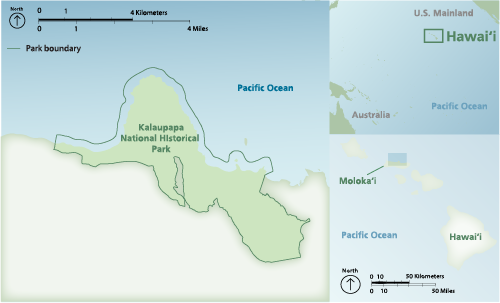Coral reefs in Kalaupapa National Historical Park form on submerged boulders
Isolated by cliffs almost 2,000 feet (600 meters) tall, the rocky wave-pounded coastline of Kalaupapa National Historical Park on Moloka’i, Hawaii is a unique place where ecologically and culturally important organisms grow. Corals in this park live on large submerged boulder fields and withstand exposure to strong waves, which in winter can reach 20 feet (6 meters) high. The remote and rugged coastal waters of this park provide shelter for a variety of fish and are a nursery ground for endangered Hawaiian monk seals. Often, mother and pups haul out onto the beach to rest in the sun and nurse. The coast is also home to ʻopihi, a limpet that clings to the rocks in the intertidal zone. For centuries, Hawaiians have collected ʻopihi for food and used their shells as tools and bowls. The waters of Kalaupapa National Historical Park are a rugged and important home for Hawaii’s marine life.
High wave energy limits the places where corals can grow and build reefs
Total area: 10,700 acres
Marine area in park:2,700 acres
At Kalaupapa National Historical Park, geology and high wave energy means that only the coral species that can tolerate such turbulent waters can grow here. In addition, coral larvae are transported in and around the park by currents and if few larvae are available, then the reef takes a long time to grow. However, monitoring suggests there is another reason why seafloor cover of live stony coral in this park is only 9%—low coralline algae cover. Coralline algae provide suitable areas for coral larvae to settle and grow, and this helps to hold the reef together by building coral colonies.
Scientists often use changes in coral cover to monitor the overall health of a coral reef. Cover refers to the space covered by a particular organism on a reef or seafloor when viewed from above. Due to its physical features, Kalaupapa National Historical Park naturally has lower coral cover than other reefs. However, a decrease in coral cover over time in the park would indicate that reef health is declining, and scientists would investigate the reasons for this.
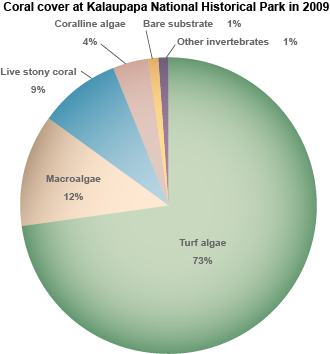
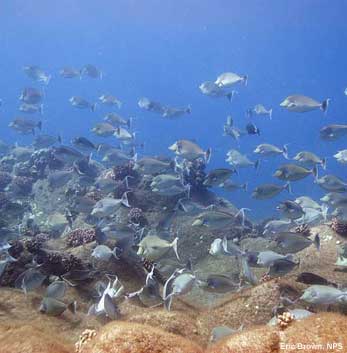
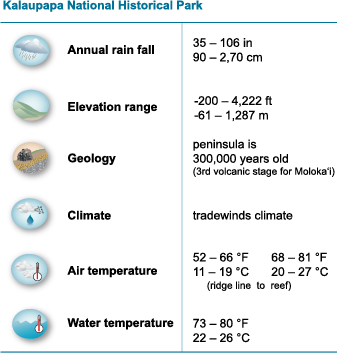
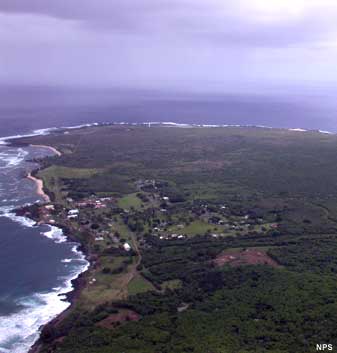
The boulder fields and steep cliffs at Kalaupapa National Historical Park will play a role in how climate change will influence corals. For example, more powerful and more frequent storms are predicted for this region as climate change continues. It is assumed that these storms will bring even stronger waves that will crash into the peninsula and cause increased damage to coral reefs. As sea level rises and storms gain in strength, conditions along the coast may become even less ideal for corals.
